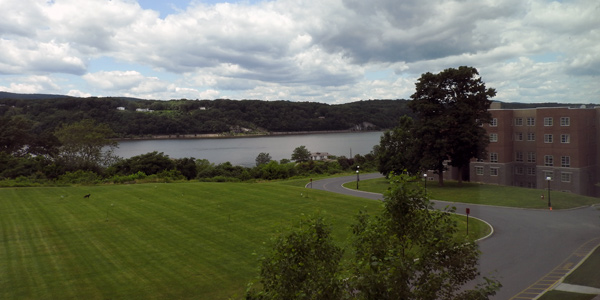By Michael Kuser
POUGHKEEPSIE, N.Y. — While renewable resources currently have only a limited impact on the New York grid, that’s set to change as the state advances on its clean energy goals, industry experts said at a conference last week.
The amount of solar in NYISO’s interconnection queue has nearly doubled within the past three months — from 850 MW to 1,600 MW, CEO Brad Jones said at the Renewable Energy Conference. The Business Council of New York State and the Hudson Renewable Energy Institute hosted the June 28 event at Marist College.
Solar and wind together now account for around 5% of the state’s generation, compared with a 20% share for hydropower. That “5% piece of the pie has to grow incredibly, by as much as five times what it is today,” to reach the state’s Clean Energy Standard goal of having 50% of generation derived from renewable resources by 2030, Jones said.
“On the wind side, we’ve got 3,300 MW of wind in our queue, and that’s not including whatever the state may do with offshore wind,” he added. Gov. Andrew Cuomo earlier this year set a target of building 2,400 MW of offshore wind capacity by 2030.
The Marist campus on the Hudson River sits in the middle of Central Hudson Gas & Electric’s service area. The utility serves only 3% of the state’s load but leads the state in terms of photovoltaic integration.
“We have over 6,000 [solar] installations interconnected to the grid today … about 66 MW,” Paul Haering, Central Hudson senior vice president of engineering, said during a presentation. “So while you think that would have a dramatic impact in terms of our peak load, the reality is, when the sun shines is not when everyone’s turning their air conditioners on and coming home from work.”
Maximum summer demand for the utility typically occurs at 7 or 8 p.m. The mismatch between PV output and peak usage represents a challenge for how to integrate distributed energy resources while minimizing the need for new transmission infrastructure, according to Haering.
“But if I’m going to replace assets, I replace it with current standards,” Haering said. “That means larger wire size and higher-voltage circuits that help us to integrate more PV, which gives me better thermal and voltage profiles in order to be able to support the integration of more PV on the system.”
And Central Hudson is adapting the grid to DERs through enhanced intelligence of the distribution grid itself rather than smart meters.
“We have technology now that allows for bidirectional flow of power on the system,” Haering said. “We built the grid for one-way power flows, so now with power coming the other way, we use bidirectional regulators and switch capacitators and substation path changers that have the capability to sense bidirectional flow and respond accordingly.”
In the past two years, National Grid has interconnected more solar than gas-fired generation in New York, said Melanie Littlejohn, the utility’s vice president of community and customer management for the state. That trend motivated National Grid to invest $100 million in Sunrun, the nation’s largest residential solar company. Storage is a key part of Sunrun’s portfolio, Littlejohn noted. (See NY Bill Sets Stage for Storage Targets.)
Littlejohn also pointed out that the North Country region has the most electric vehicles in Upstate New York, prompting the utility to install 68 charging stations in downtown Syracuse, in partnership with the federally supported Clean Cities coalition, which runs the utility’s stations throughout the state.
Who Pays?
Asked how National Grid manages the effect of renewable energy programs on customer rates, Littlejohn said, “Very gently. … More than 30% of our Upstate New York customer base lives at or below the poverty level.”
Tina Palmero, deputy director of the state’s Office of Clean Energy, said the New York State Energy and Research Development Agency is working to meet the governor’s ambitious offshore wind target by 2030: “And of course we have to think of rate impacts as well.”
One option for controlling costs could entail increased financial support for existing nonemitting resources. Regulators are looking at the operations of so-called Tier II generators, which consist mostly of small hydropower facilities, many of them family-run. “If it’s cheaper to keep them open than seeing them cease operation and having to procure new renewables, the commission will look at that and consider whether or not they should get some additional subsidy,” Palermo said.
Diane Burman of the New York Public Service Commission said that providing the best possible electric service to customers “is what it’s all about.”
Burman, who was recently confirmed for a second six-year term as commission, said she hopes to re-examine what the PSC can do in “giving the flexibility to others, so that we are not dictating the technology, maybe even the brand that should be used. That’s not helpful.”







